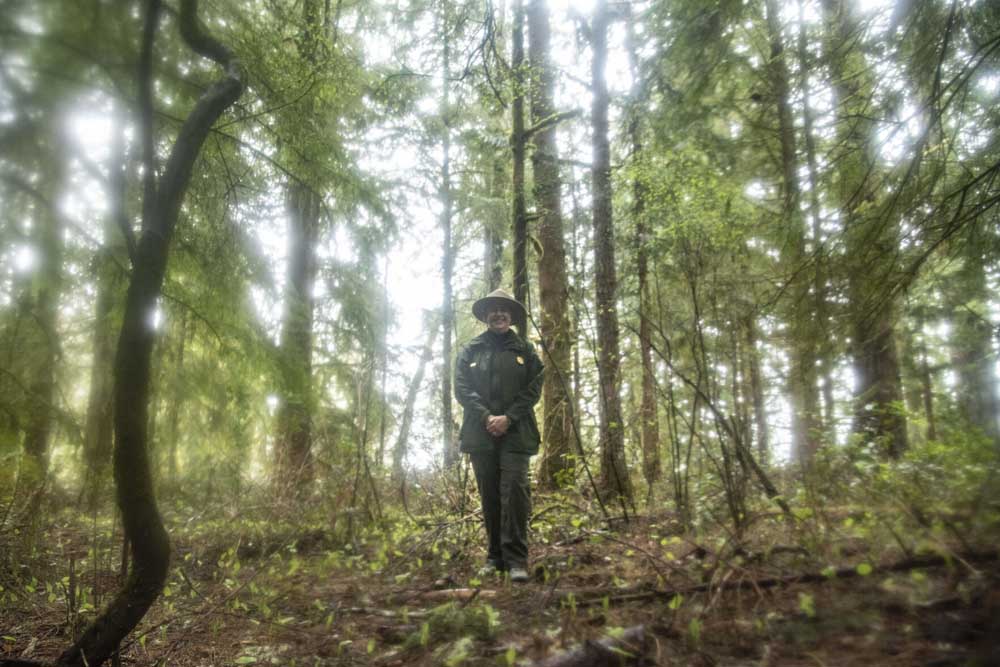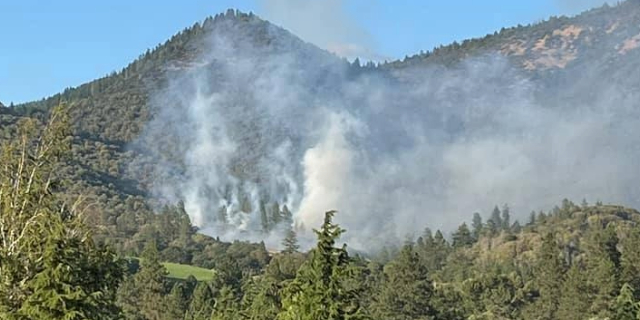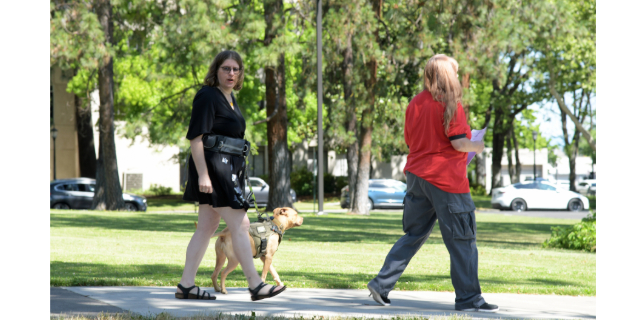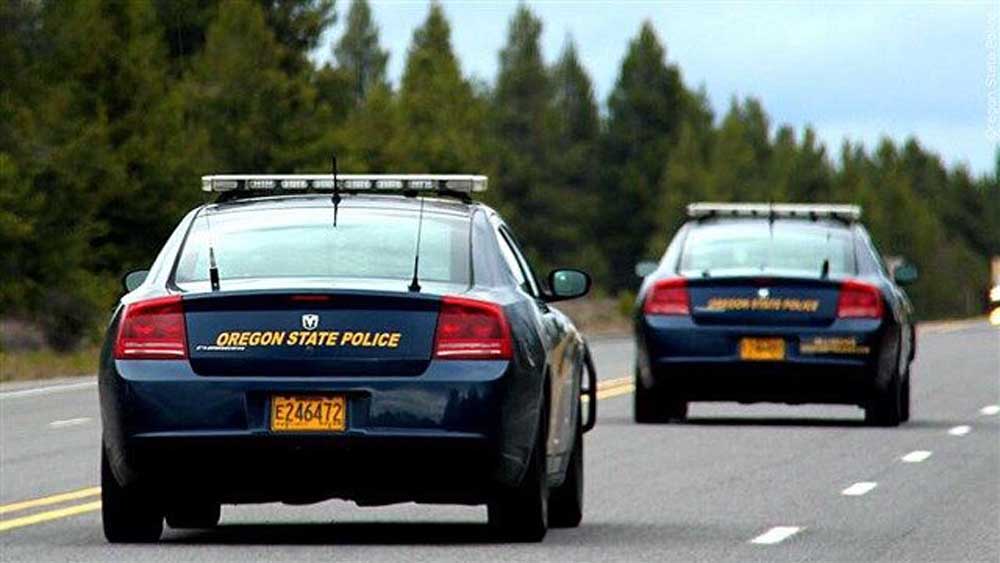Education specialist connects with youth at famed Lewis and Clark park
Published 6:00 am Tuesday, April 9, 2024

- Cathy Peterson was the education specialist at Lewis and Clark National Historical Park.
On a recent afternoon at Lewis and Clark National Historical Park, Cathy Peterson settled into her seat and cracked open a three-ring binder.
Thumbing through the plastic sheet-protected pages, she smiled, reminiscing on snapshots from her nearly two decades with the park. One page held pictures of an outdoor art installation. Another framed a selfie from a hike with the Portland Thorns. A third began a series of letters from a group of elementary schoolers.
Peterson stopped at a photo of five high school students.
“He’s at Arches National Park,” she said, pointing to one of the figures in the picture.
“She got her doctoral degree at Dartmouth in soil sciences.”
“This woman is a GS-9 — she’s our maintenance lead right now.”
The students in the photo — at the time, all participants in the Youth Conservation Corps — are among thousands that Peterson has interacted with as an education specialist at Lewis and Clark. They’re also a reminder of the legacy she’s leaving after retiring in March.
Connection to parks
Peterson grew up in Northern California, exploring Point Reyes National Seashore and Golden Gate National Recreation Area. To that end, she had always had a connection to the National Park Service — but becoming a ranger wasn’t initially part of the plan. In fact, she spent her first career as a journalist, including at The Astorian.
After moving to Astoria and starting a family, Peterson began volunteering with the local children’s museum, where she met a couple of people affiliated with Lewis and Clark National Historical Park. Before she knew it, she was helping with fundraising, outreach and children’s activities for the park’s Lewis and Clark Expedition bicentennial.
That initial connection opened a door.
“I started to really appreciate what could happen in the realm of outdoor education and park education,” she said.
Gradually, Peterson became more involved with the park, first doing contract work for the Lewis and Clark National Park Association, and later becoming a ranger and earning her master’s degree in environmental education and interpretation. As an education specialist, she created and facilitated countless programs, from kindergarten and prekindergarten education opportunities to nature-themed summer camps.
One of the first big projects Peterson took on was as volunteer centennial coordinator for the Pacific West region, working with park staff across dozens of National Park Service sites to help plan and develop best practices for the National Park Service’s hundred-year anniversary.
“It was really kind of interesting and exciting to talk with other interpreters and park leads about becoming increasingly relevant to our changing America, and ways to be responsive to park visitors and audiences,” Peterson said. “I’m partial to learners — how can we create meaning for what we’re doing here at parks? These are their national parks, these are public spaces.”
Those conversations also gave way to an idea: adopting the Class of 2016.
The idea was to bring local classrooms into Lewis and Clark National Historical Park every year, starting in the fourth grade. Fourth graders would visit Fort Clatsop, fifth graders would learn about watersheds, sixth graders would hike the Fort to Sea Trail and seventh and eighth graders would learn about concepts like sustainability and invasives. Then, high school students could choose to do internships and work at the park through the Youth Conservation Corps. That first class of fourth-graders would graduate in 2016 — the same year as the centennial.
Lewis and Clark National Historical Park still does many of the same kinds of field trips today, Peterson said, and some other parks have adopted elements of the program into their own curricula. The goal is to create ladders of engagement through continued experiences in the park, so youth can eventually take those experiences out into the community.
“If you don’t get (youth) into the parks, then they’ll never become stewards of the park. And so you need to make those connections, and that’s what Cathy did is made these connections,” said Jill Harding, the park’s director of visitor services. “As those youth become adults, when they go on vacations, when they think about what’s important to them and how they want to spend their money and how they want to vote, then, you know, they’re gonna hopefully think about their experience here and what that meant to them.”
Juanantonio Salcedo has experienced the impact of those connections firsthand.
Salcedo, a teacher at Warrenton Middle School, moved to Warrenton with his family in 2008. At that point, he admits, he wasn’t even aware of Lewis and Clark National Historical Park. In high school, however, he met Peterson and became a Youth Conservation Corps member. Through the program, he had the chance to work at the park doing reenactments, maintenance and conservation, and to explore other national parks like Mount Rainier, Mount Baker and North Cascades.
As a high school student, Salcedo wasn’t sure what he wanted his future to look like, but teaching had certainly crossed his mind. Peterson recognized that interest and helped connect him with leadership opportunities as a park camp counselor.
“The camps were phenomenal, not only for the kids, but for the counselors as well,” Salcedo said. “Cathy really went above and beyond to make sure that everybody was having a great time, and that the information provided and the things that we were doing were beneficial and were fun, and that someone was always learning something new, whether it was a counselor or a camper.”
As an adult, Salcedo has remained connected to the park. Recently, he helped translate the Junior Ranger handbook into Spanish. He’s also eager to find opportunities for his own students to visit.
Salcedo said he tries to carry his experiences with Peterson into his work as a teacher.
“I try to use some of what I learned from Cathy, like how can I be my best self for these students?” Salcedo said. “How can I kind of replicate how Cathy was, not only to me but to other campers and other people who were learning, coming through the park?”
Sense of purpose
Peterson said one of the most rewarding aspects of her job has been the people — not only students like Salcedo, but also fellow park staff. As a park ranger and education specialist, she’s felt a sense of purpose and unity with her colleagues, especially when it comes to the National Park Service’s mission to preserve and conserve natural areas for future generations.
Now more than ever, Peterson said, science is showing the importance of being outdoors.
“This place is really precious,” she said. “So, I think the importance of people being in it and seeing that they can play a part in caring for it is really gratifying.”
Looking ahead, she hopes park staff will continue to grow and find new ways to connect with the community, and to share more of the diverse perspectives in the story of Fort Clatsop.
“There are definitely some big shoes to fill,” Salcedo said.






